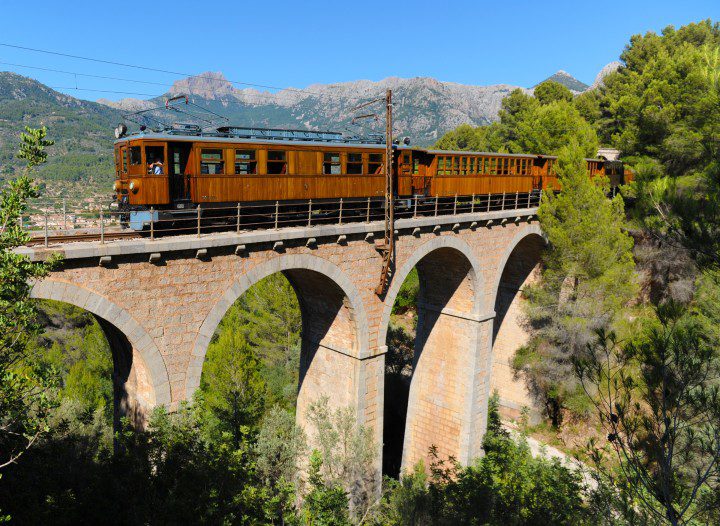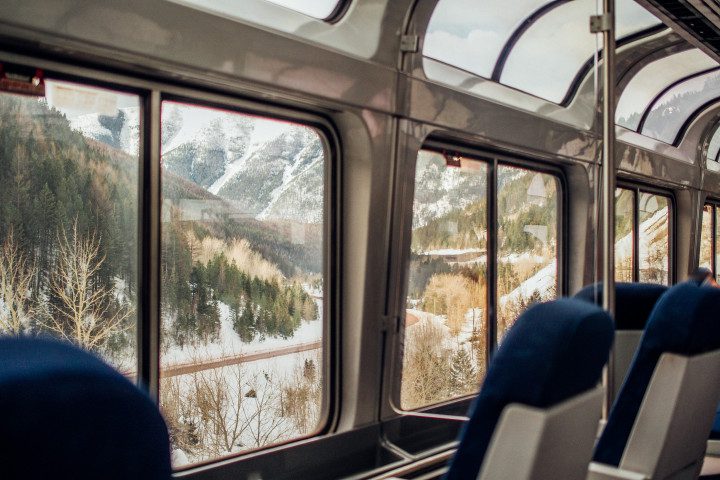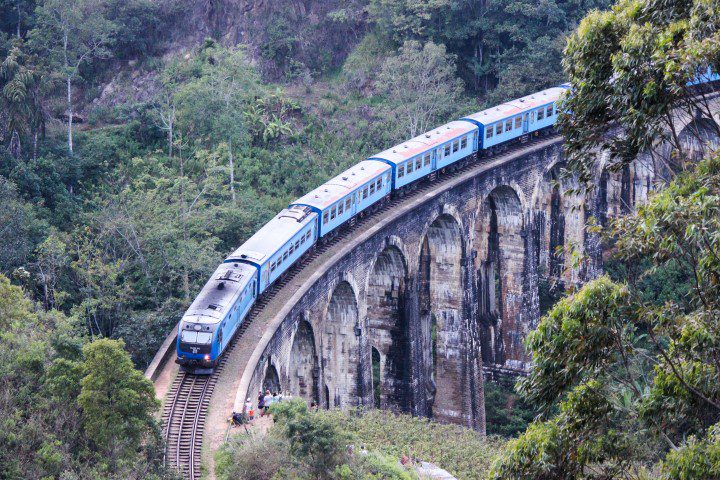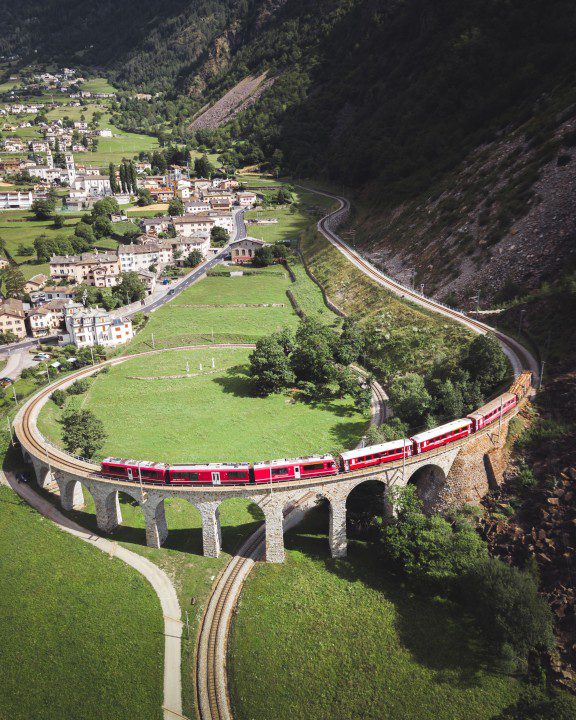Imagine gliding through the picturesque European countryside, enjoying the comfort and efficiency of modern trains while taking in breathtaking views. Train travel, especially rail travel in Europe, offers a unique and unforgettable experience, connecting major cities and charming villages alike.
In this comprehensive guide, you’ll discover the ease of European rail travel, tips for planning the perfect trip, and how to navigate train stations and board trains with confidence.
Short Summary
Explore Europe in comfort and ease with European rail travel
Enjoy high-speed trains, regional routes & popular rail journeys for a unique experience
Follow these tips to plan your adventure, book tickets, navigate stations & stay safe on board
Frequently Asked Questions
The Ease and Comfort of European Rail Travel

There’s something magical about train travel in Europe. It’s a comfortable, efficient, and scenic way to explore the continent, from bustling cosmopolitan cities to fairy tale-like canalside towns and majestic alpine mountains.
Whether you’re traveling through western Europe, eastern Europe, or anywhere in between, the vast rail network offers a unique perspective on your journey.
High-Speed Trains
High-speed trains are a marvel of modern engineering, whisking passengers across long distances at incredible speeds. These trains are designed for comfort, offering spacious seating and amenities like Wi-Fi and power outlets. They connect major European cities, making it easy to explore multiple destinations on a single trip. Plus, the impressive speed of these trains means you’ll spend less time in transit and more time enjoying your destination.
Traveling on a high-speed train is an experience in itself. As you sit back and relax in your comfortable seat, it’s hard not to marvel at the smooth ride and stunning landscapes whizzing by. With first and second class options available, you can choose the level of luxury that suits your needs. And don’t forget about the convenience of seat reservations, ensuring you have a dedicated spot on your journey.
High-speed trains are prevalent across Europe, with many countries boasting extensive networks. From the Eurostar connecting London to Paris and Brussels, to the TGV in France and the ICE trains in Germany, these modern marvels make exploring Europe a breeze. So sit back, relax, and let the train whisk you away to your next adventure.
But high-speed trains aren’t the only way to get around Europe. For those interested in exploring smaller towns and villages, regional trains offer a more leisurely pace, allowing you to truly enjoy the journey.
Regional Trains
Regional trains are the unsung heroes of European train travel. These slower trains connect nearby villages to big cities, offering an intimate look at the local landscape and culture. While they may not have all the bells and whistles of their high-speed counterparts, regional trains provide a unique and authentic experience that’s not to be missed.
One of the benefits of local and regional trains is their accessibility. With fixed fares, you can book a ticket at any time without worrying about price fluctuations. This makes it easy to plan a spontaneous day trip or excursion without breaking the bank.
Though regional trains may not offer the same level of luxury as high-speed trains, they still provide a comfortable and enjoyable ride. With ample seating and picturesque views, you can sit back and relax as the train meanders through the countryside, stopping at quaint villages and picturesque towns along the way.
So whether you’re exploring the south coast of England, the rolling hills of Tuscany, or the rugged coastline of northern Spain, regional trains offer a slower pace and a more intimate look at the destinations you visit. Embrace the journey and discover the hidden gems of Europe by train.
Planning Your European Train Adventure

Embarking on a European train adventure requires some planning, but with the right tools and knowledge, you’ll be well on your way to a memorable trip. From researching popular rail routes and booking tickets, to understanding timetables and making connections, this section will guide you through the process of planning the perfect train journey.
Whether you’re looking for a scenic journey through the Swiss Alps or a quick hop between major cities, there are plenty of options to choose from. With a little bit of research, you can find the perfect route for your trip. You’ll also have another chance.
Popular Rail Routes
Europe is home to countless awe-inspiring rail routes, offering a diverse range of experiences for travelers. Some popular routes include the Northern Europe trip from Amsterdam to Bruges, Paris, Chur, and Milan, showcasing cosmopolitan cities and stunning alpine scenery. For a taste of the Iberian Peninsula, the Spain & Portugal journey takes you from Barcelona to Valencia, Madrid, Porto, and Lisbon, immersing you in vibrant cultures and breathtaking landscapes.
Other popular routes include Budapest to Zagreb, exploring the charm of Eastern Europe, and the classic Paris to Milan journey, offering a taste of French and Italian culture. With so many incredible routes to choose from, the possibilities for your European train adventure are virtually endless.
Booking Tickets
Securing your train tickets is a crucial step in planning your European train adventure. You can purchase tickets directly from each country’s National Rail Service, or use third-party train booking search engines like Rome2Rio, Omio, or Trainline. When booking, be sure to consider both fixed-price and variable-price fares, as these can greatly impact your travel budget.
Fixed-price tickets are typically available for regional trains and can be booked at any time without worrying about price changes. Variable fares, on the other hand, fluctuate based on factors such as demand, day of the week, and time of year. By booking variable-price tickets in advance, you can often secure better deals and save money on your trip. There is also a way for frequent Europe train travel seekers to save money buy purchasing rail passes. To buy train tickets in bulk under a single fee monthly pass allows train companies to offer eurail passes at cheaper prices.
When booking your tickets, also keep in mind any necessary seat reservations, particularly for high-speed or international trains. Some trains require specific reservations, while others offer open seating. Be sure to check the requirements for your chosen route to avoid any surprises at the station.
Finally, don’t forget about the option of a rail pass, such as Eurail or Interrail passes. These passes offer flexibility and potential cost savings for travelers planning to explore multiple European countries by train.
Understanding Timetables
Timetables are an essential tool for navigating European train travel, ensuring you know when and where your train departs and arrives. Online timetables, such as the European Rail Timetable or German Railways (bahn.de/en), offer up-to-date information on train schedules across the continent.
Check the timetable carefully. Make sure you note the train number, departure time and platform information. This will help you find your train and ensure a smooth boarding process. Additionally, be aware of any changes to the timetable, such as seasonal adjustments or temporary service disruptions.
By familiarizing yourself with European train timetables, you’ll be well-equipped to plan your journey and make the most of your time exploring Europe by rail.
Navigating Train Stations and Boarding Trains

Once you’ve planned your journey and secured your tickets, it’s time to navigate the train stations and board your train. This section will guide you through the process of finding platforms and departure information.
It will also offer tips for ticket validation and seat reservations.
Finding Platforms and Departure Information
Locating platform and departure information at train stations is an essential skill for any European train traveler. Most stations have electronic departure boards displaying up-to-date information, including train numbers, departure times, and platforms. In smaller stations, you may find printed timetables or need to ask station staff for assistance.
To ensure a smooth boarding process, always double-check that you’re at the correct train station and platform. Keep in mind that some cities have multiple stations, and trains may depart from different platforms depending on their destination.
By familiarizing yourself with train station layouts and departure information, you’ll be well-prepared to navigate the bustling stations and board your train with confidence.
Ticket Validation and Seat Reservations
Before boarding your train, it’s important to validate your ticket, if necessary. This process involves stamping your physical ticket with the time and date at a designated machine, typically located near the platform entrance. Validating your ticket is crucial to avoid potential fines, so be sure not to skip this step.
When it comes to seat reservations, some trains require specific reservations, while others offer open seating. Be sure to check the requirements for your chosen route and make any necessary reservations in advance. Once onboard, look for the class designation (1st or 2nd class) and any seat numbers to ensure you’re in the correct train car and seat. When booking train tickets, see if you have the option for paper tickets or e tickets (digital) or both. If you opt for a digital ticket, make sure you have access to the free wifi so you can bring up your European train tickets on your phone or tablet when asked for proof of purchase.
By properly validating your ticket and understanding seat reservation requirements, you’ll be well on your way to a smooth and enjoyable European train journey.
Onboard Experiences and Amenities

While the journey itself is a significant part of the European train travel experience, the onboard amenities and experiences can also enhance your trip. From dining options to sleeping accommodations and connectivity, this section will explore the various features available on European trains.
Onboard dining options vary from train to train, but most offer a selection of snacks, drinks, and meals. Some trains even offer a full-service restaurant car, where you can enjoy a sit-down meal.
Dining Options
European trains offer a variety of dining options to satisfy your hunger during your journey. On international trains, you may find dining car service with a full menu of hot meals, snacks, and drinks. These dining cars often offer table service, allowing you to enjoy a meal while taking in the passing scenery.
For a more casual dining experience, bar cars offer light meals, such as sandwiches and salads, available throughout the journey. Keep in mind that pets and guide dogs are not allowed in restaurant, cafe, or bar cars, with the exception of guide dogs for the visually impaired.
While the quality and availability of dining options can vary depending on the train and country, the opportunity to enjoy a meal onboard adds a unique and enjoyable element to your European train adventure. Most trains will also offer a bar car that allow you to ride with a beverage of your choice. Traveling first class will likely include things like meals and drinks.
Sleeping Accommodations
For overnight train journeys (sleeper train), sleeping accommodations are an essential consideration. Sleeper trains offer various options, from ordinary seats to couchettes and sleepers. Couchettes (sleeper car) provide a more comfortable option, with bunk beds and bedding included, while sleepers offer private compartments with beds and additional amenities. This comes down to personal preference. Fewer passengers travel Europe on short routes, so direct trains or a sleeper train is likely best for long distance routes.
When selecting your sleeping accommodations, consider the length of your journey and your personal comfort preferences. A good night’s sleep can make all the difference in your overall train travel experience. If you are not concerned about cost, a first class accommodation or eurail pass are two great options.
Connectivity and Entertainment
While European trains may not offer the extensive entertainment options found on airplanes, they do provide some onboard connectivity features. Most long-distance trains offer Wi-Fi, particularly on high-speed routes. Additionally, some trains include power sockets and USB ports, allowing you to charge your devices during your journey.
It’s important to note that internet access on European trains can be unreliable, so it’s a good idea to bring your own entertainment, such as books, music, or downloaded movies. By staying connected and entertained, you’ll help ensure a smooth and enjoyable rail journey across Europe.
Staying connected also allows you to travel Europe and avoid possible rail strikes, or know the distance to the next city center or European country on your itinerary.
Making Connections and Transfers

An essential aspect of European train travel is making connections and transfers between trains and stations. Planning for connection times and knowing what to do in case of missed connections will help ensure a smooth and stress-free journey.
It is important to plan ahead and allow enough time to make connections. Research the station and the train you will be transferring to, and make sure you know the platform.
Connection Times
Connection times between trains in Europe can vary, with options as short as 15 minutes often shown in timetables. When planning your journey, it’s crucial to allow enough time for transfers, taking into consideration factors such as the size of the station, the distance between platforms, and any potential delays.
By giving yourself ample time for connections, you’ll avoid unnecessary stress and ensure a smooth train travel experience. Don’t forget to double-check the timetable for any changes or updates to your connection times.
Handling Missed Connections
In the event of a missed connection, it’s important to know what steps to take. First, seek assistance from station staff, who can provide guidance on your next steps. If you have a through-ticket and miss your connection due to a delay, you may be entitled to be rebooked on a later train at no extra cost, according to the international conditions of carriage (CIV) rules.
If you need to take a later ICE or Thalys train due to a missed connection, explain the situation to the conductor and request a Railteam stamp on your ticket, which will allow you to board the next available train. By being proactive and knowing your rights, you can minimize the impact of missed connections on your European train journey.
Traveling with Special Needs and Pets

For those traveling with special needs or pets, understanding accessibility options and pet policies is essential for a smooth and enjoyable train journey.
It is important to research the train line you are traveling on to ensure that they have the necessary accommodations for your needs. Many train lines have dedicated staff and services to help those with special needs or those traveling with special needs.
Accessibility
Most modern European trains offer accessible features for passengers with special needs. These include designated spaces for wheelchair users, often located near wheelchair-accessible restrooms. Many trains also provide companion seats for friends or family members traveling with the wheelchair user.
By familiarizing yourself with the accessibility options available on your chosen route, you can ensure a comfortable and inclusive train travel experience for all passengers.
Pet Policies
Pets are generally allowed on most European trains, with some restrictions and requirements. While service dogs accompanying visually impaired or physically disabled passengers can ride all European trains for free, other pets may be subject to limitations based on size and train company policies.
When planning to travel with your pet, it’s essential to check the specific policies of each train operator to ensure a smooth and stress-free journey for both you and your furry friend.
Tips for a Smooth and Enjoyable Rail Journey

To make the most of your European train adventure, consider these tips for a smooth and enjoyable journey. From packing essentials to being aware of safety and security, these suggestions will help ensure a memorable and worry-free train experience.
Pack light and bring only the essentials. Make sure to bring a valid passport and any other necessary documents. Bring a map of the area you’ll be traveling in, and familiarity with the area.
Packing Essentials
When packing for your European train journey, consider including items such as a neck pillow, blanket, eye shade, basic toiletries, camera, journal, iPod, Kindle, reading material, sweater, sun cream, water bottle, blister plasters, painkillers, and vitamins. These essentials will help make your journey more comfortable and enjoyable.
Additionally, be prepared for the train toilets by packing toilet paper and hand sanitizer, and wearing close-toed shoes. By packing thoughtfully, you’ll be well-equipped for a smooth and enjoyable train journey across Europe.
Finally, by buying train tickets in advance, train travel in Europe will be more stress free. There are plenty of third party booking sites that offer up to date rates helping you feel assured your train ticket is not going to gouge you. Depending on which class tickets you prefer, travel Europe by your means and knowing you are creating memories of a lifetime.
Safety and Security
When it comes to safety and security during your European train journey, it’s important to be aware of your surroundings and take necessary precautions. Keep your valuables hidden, avoid leaving your bags unattended, and consider locking or chaining your luggage to the rack.
When sleeping on overnight trains, avoid sleeping alone in a compartment and be mindful of your environment. By staying vigilant and following these safety tips, you can ensure a secure and enjoyable train journey throughout Europe.

Summary
European train travel offers a unique and unforgettable experience, providing a comfortable and efficient way to explore the diverse landscapes and cultures of the continent. By planning your journey, understanding train station navigation, and being aware of onboard amenities and experiences, you’ll be well-prepared to embark on the adventure of a lifetime. So pack your bags, grab your tickets, and let the train whisk you away to new and exciting destinations across Europe.
Whether your train starts in northern Italy to tour a grand canal, or your first class ticket takes you through another major city, mainland Europe is at your fingertips waiting to take you on train routes of a lifetime.
Frequently Asked Questions
What is the train in Europe called?
Hey there! Did you know that in Europe, the train is called the Eurostar? It’s an international high-speed rail service connecting the UK with France, Belgium, and the Netherlands. It even travels through the Channel Tunnel between the UK and France! Traveling Europe has never been easier so book you specific trains or first train tickets today!
Pretty cool, huh?
Does rail Europe still exist?
Yes, Rail Europe still exists and is a leading provider of international train tickets. It has numerous subsidiaries across the globe, including in London, UK, Melbourne, Australia, Mumbai, India, Shanghai, China, and Florida, US.
The company offers a variety of high-speed train tickets, such as Eurostar, TGV, Italo, and Le Frecce.
Which site is best for rail travel in Europe?
If you’re looking for the most convenient way to book your European rail travel, then look no further than Omio or Trainline. These third-party booking services are much more user-friendly than individual national rail services and will help you find the best deals and prices available.
With them, you’re sure to have a smooth journey!
What are the major railroads in Europe?
Rail transport in Europe is dominated by a few major players. These are SNCF, Renfe, DB, Eurostar, Trenitalia, and BB. All these railroads provide efficient intercity travel throughout Europe, making it easy to explore the continent.
Rail transport is a great way to get around Europe, as it is fast, reliable, and often cheaper than other forms of transport. It is.
Can you travel through Europe on train?
Yes, you can travel through Europe on a train. Interrail and Eurail passes offer convenient and economical ways to explore Europe by rail. The passes are tailored to your nationality or residence and allow for unlimited travel within and between European countries.
With these passes, you can travel to major cities, small towns, and even remote villages. You can also take advantage of discounts.


